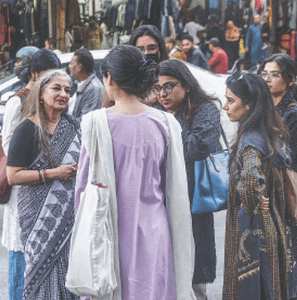KARACHI, March 9: Illegal hunting, trapping and export of parrots on a mass scale have brought about a sharp decline in its population in Sindh and Punjab, a survey shows.
The survey titled Status and Distribution of Parakeets in Punjab and Sindh Provinces of Pakistan was conducted by the Zoological Survey Department in collaboration with the wildlife departments of the two provinces and financed by the World Wide Fund for Nature (WWF).
The survey covered 23 districts of Sindh and Punjab in 2011 and focused on two parrot species — rose-ringed and Alexandrine.
Its findings have recently been published in Guardians of the Indus: Conserving the Ecosystem, the WWF 2012 report.
The survey was conducted following concerns were expressed by certain quarters that the National Council for Conservation of Nature (NCCW) had imposed a ban on parrots exports (in 2008) without determining the population of the species. Before the ban, the yearly quota permitted by the NCCW to export these birds stood at 25,000.
The survey showed that all the four species of parakeets — rose-ringed parakeet, Alexandrine or large Indian parakeet, blossom-headed parakeet and slaty-headed parakeet— were observed in Punjab. The single district where all the four species were observed was Rawalpindi.
The slaty-headed and plume-headed parakeets were observed in good numbers in the Murree Biodiversity Park near Chitta Morr Murree (Rawalpindi district). The three species of parakeets — the rose-ringed, slaty-headed and plume-headed — were observed in a single habitat in Islamabad.
The habitat consisted of mixed trees of kikar, berry, sheesham and fruit trees of chikoo, guava, date palm and mango.
Whereas only the rose-ringed parakeets were seen in selected districts of Sindh, the highest population density of rose-ringed parakeet was observed in Mirpurkhas district.
The total population of the two species was estimated at 58,818 in the two provinces.
An approximate population density of 55,127 rose-ringed parakeets was observed in 13 selected districts of Punjab and only 18,688 (rose-ringed) parakeets were observed in the 15 selected districts of Sindh.
The highest number of rose-ringed parakeets was observed in Faisalabad district, that is, 1,390 birds with approximate population of 10,435 birds throughout the district. In Punjab, the Alexandrine parakeet was observed with an approximate population of 3,961 birds and the highest number of the parakeet was observed in Kasur district with an approximate population of 2,631 birds.
Citing a survey conducted in 1991 by T.J. Roberts, the survey says that Mr Roberts had also recorded Alexandrine Parakeet in Sindh in districts of Ghotki and Sukkur near Punjab, but the species was not observed during the current study in both districts.
“If we compare our results with that of Mr Roberts, the parakeets, especially rose-ringed parakeets in different parts of the country, a significant decrease can be noted in Sindh and Punjab. This decrease can be attributed to different factors like hunting, loss of habitat and export,” the survey says.
Referring to the information gathered from local hunters, common people and market surveys, the survey says that thousands of parakeets are annually captured and exported. A visit to the Empress Market in Karachi, one of the largest bird selling markets in the country, revealed that parakeet catch has decreased over the last decade.
“A decade ago 50,000 to 70,000 parakeets were annually brought for sale from different parts of the country and now only 10,000 to 14,000 birds reach here. During the current survey the annual catch of parakeets especially of rose-ringed was recorded 200 to 3,000 birds and each hunter traps 30 to 200 birds throughout the year in each district of Punjab.
“In Sindh 30 to 300 birds are captured per hunter and 250 to 2,000 birds are captured from each district throughout the year,” the survey says.
According to the report, people who are involved in hunting are mostly professionals but some agriculture labourers are also involved in parakeet part-time hunting. The rose-ringed parakeet was the most captured species in both provinces. These birds are locally sold to middleman or in local markets.
The adult rose-ringed is sold for Rs100 to Rs540 whereas an adult Alexandrine parakeet for Rs2,000 to Rs5,000. It was found that chicks of both the species were highly priced than that of adults due to their quick learning ability. The chick of Alexandrine parakeet fetches as much as Rs6,000 and the chick of rose-ringed is sold at between Rs500 to Rs1,000.
The report points out that habitat loss is one of the most threatening factors responsible for the decline in parakeet population.
Almost all the four species of parakeets make their nest or occupy the nest of other bird species in old tree holes.
Deforestation is rampant throughout the country and mostly old trees are ruthlessly cut down for wood, timber and other purposes, thus reducing roosting and nesting sites of parakeets.The report recommends a countrywide census on parakeets, besides strict enforcement of wildlife laws and the NCCW ban on exports in order to conserve the remaining parrot population.
































